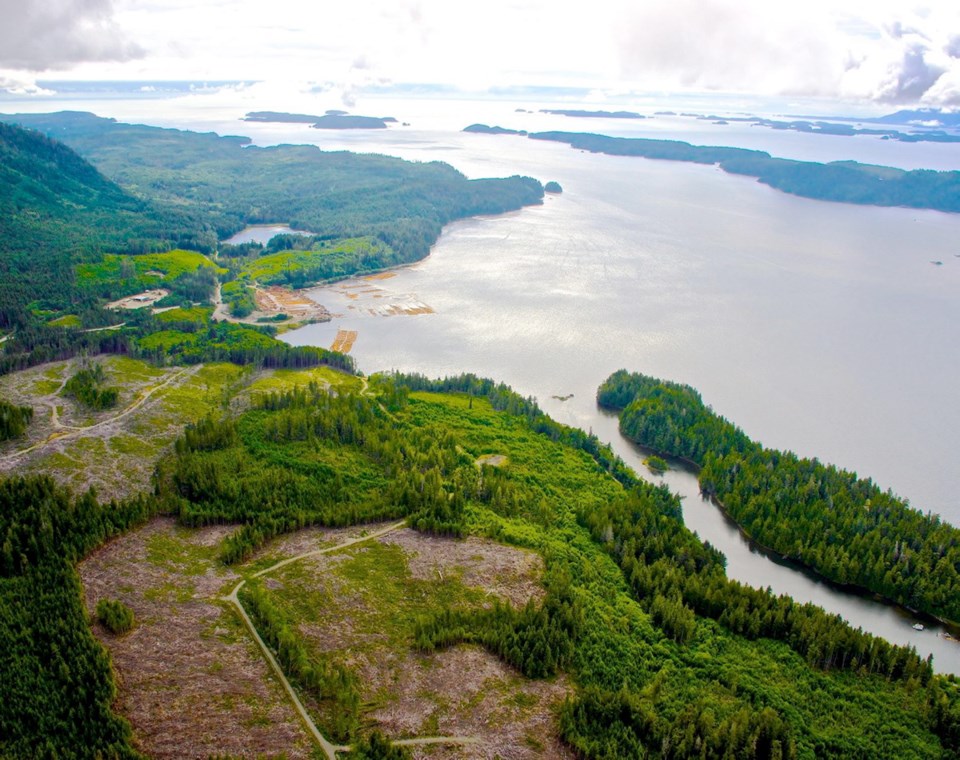 Any liquefied natural gas plant on Vancouver Island is a long way off, but on one aspect, Steelhead LNG is slightly ahead of the game.
Any liquefied natural gas plant on Vancouver Island is a long way off, but on one aspect, Steelhead LNG is slightly ahead of the game.
The company has secured a First Nation’s endorsement of its plans earlier than some of the many others eyeing the potential in B.C. for such an industry.
The Huu-ay-aht First Nation on the west coast of the Island put the idea of an LNG plant on its Sarita Bay territory near the mouth of the Alberni Canal to a vote on the weekend. The small band supported the idea by a 140-to-61 margin. Some of the other projects, such as Petronas’ proposal near Prince Rupert, are years further ahead in the approval process and were still — until recently — negotiating important First Nations support.
Steelhead LNG head Nigel Kuzemko was quick to highlight the edge.
“This is a first in B.C. and Canada, and creates a significant degree of certainty early in the project for not only Huu-ay-aht and Steelhead LNG, but also for government, investors and customers.”
The company still has years and billions of dollars to go. But its position relative to timing has one advantage — it has missed the price slump that upset everyone else’s calculations. Petronas has all the approvals it needs, but has held off pulling the trigger, because of the price uncertainty.
Steelhead’s timing is years behind, but Kuzemko said Monday “every single forecast” calls for significant demand for natural gas in Asia by 2024, which is when they are targeting production. That would make for a final investment decision in 2019-20, subject to dozens of issues being resolved.
One of them is the curious tie-in with the other project Steelhead is trying to drive concurrently — putting a barge at the Bamberton site in the Saanich Inlet and running a small floating LNG plant there, about one-quarter the production volume of the Sarita proposal. Opening a large-scale industrial concern on the heavily populated Saanich Inlet is very much a long shot. Particularly one that involves LNG tankers negotiating the Gulf Islands every few days.
Even Premier Christy Clark, who has been wildly enthusiastic about LNG, holds off on fully supporting the Bamberton proposal. She told the Times Colonist at year-end it’s more complicated than the others because the pipeline plan involves crossing the U.S. border, then routing it to the Island. It’s a “long, long, long ways off,” she said.
But Kuzemko said Monday the company is pursuing both ideas with equal priority and is looking for synergies between the two proposals on the pipeline. About the only thing going for the Bamberton project at this point is Malahat First Nation endorsement. Similar to Sarita, the company got the First Nation’s support early.
Huu-ay-aht chiefs Robert Dennis and Derek Peters (hereditary) were on hand Monday to endorse Steelhead’s plans. A 24-million-tonne-a-year plant would be an inviting opportunity for investors and give the band an opening into the international business world, they said.
The band signed a project-development agreement with the company a few years ago. That was described as a way to give band leaders permission to explore the concept further, subject to conditions. The weekend vote on the question: “Do you approve the proposed Huu-ay-aht Sarita LNG project?” is a firmer indication of support.
The result shows that the project has met or will meet the conditions and reaffirms that the band is interested, said Peters. The band of 750 members has an unspecified equity share in the project and some co-management authority over it. Last month, the band, which is self-governing under a modern treaty, bought the potential site from a forest company.
The company is financed by Alberta companies putting down a long-range bet on future western Canadian gas trends. Kuzemko said if they can harness the enthusiasm of First Nations stakeholders, and B.C.’s proximity to Asian markets that will start demanding much more gas in the future, they’ll have a “fantastic opportunity.”
It’s still very much a long-term investment with long-term, generational payoffs.
“We’re not in this for a quick buck,” he said.



